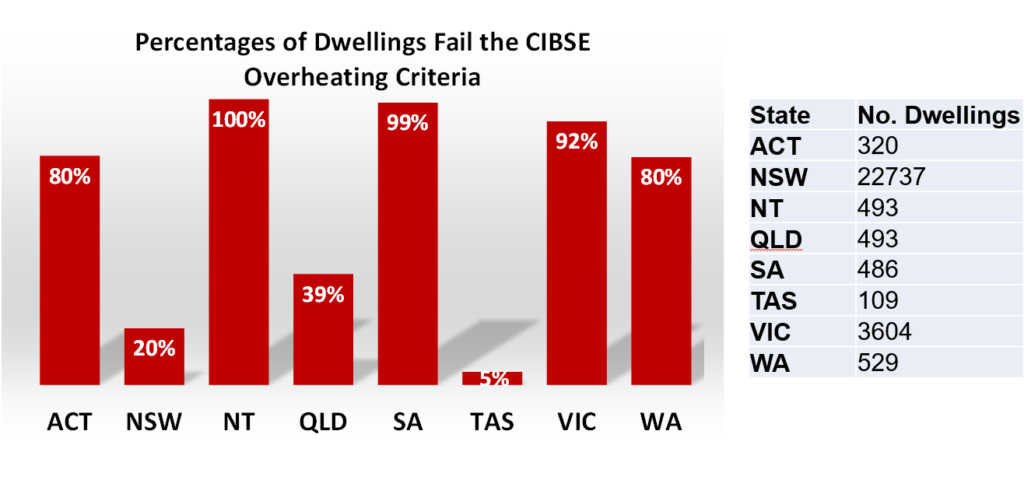November 7, 2019
Dong Chen, Zhengen Ren and Brad Lane
Heat waves have been recognised as one of the major natural hazards which kill more people than any other natural hazards in Australia. Since the most vulnerable population groups during heat waves are the elderly, infirm, socially isolated or the very young, overheating in residential buildings is one of the major causes of heat related death during heat waves. Overheating in residential buildings and its potential health impact may become worse with the increasing urbanisation and future global warming. Currently, NatHERS star rating is based on the assumption that heating and cooling are always available in the house to keep the occupants thermally comfortable. This rating methodology can potentially deliver high star rated house overheated when in free-run operation without air conditioning. Unfortunately, except some European countries, most countries have no regulations or criteria on overheating for residential buildings. The research team at CSIRO is currently collaborating with Australian research institutes in developing criteria for free-run residential buildings.
As the first step, AccuRate simulations were carried for 28771 new dwelling designs (dwelling designs from the HStar web portal from Nov 2015 to Aug 2018) by assuming free-run operation without air conditioning across the eight states and territories. The simulated indoor temperature results were checked against the UK Chartered Institution of Building Services Engineers (CIBSE) overheating criteria CIBSE TM59 2017. The following figure shows the percentages of dwellings fail the CIBSE overheating criteria if the house is operated in free-run operation and the number of dwellings simulated for each state and territory. Although we should not directly adopt the CIBSE criteria for Australia, considering that most of these new dwellings built in recent years will be in service for the next 50 years or even longer when many regions in Australia will be 1 – 2ºC warmer, the overheating issue in Australian new houses when operated without air conditioning is alarming. Significant effort is needed to resolve this hot issue in houses.

Percentage of Dwellings Fail the CIBSE Overheating Criteria

